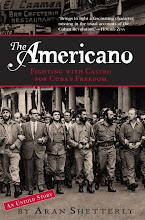You will be able to read all the content for the August issue of Inside Mexico at www.insidemex.com
As a kid, I loved to watch the Cuban pitcher Luis Tiant spin victories for the Red Sox. I read The Old Man and The Sea in a sitting. I marveled at my grandparent’s tales of a glamorous, 1950s visit to Havana. So Cuba entered my consciousness as a land of baseball, big fish and rum-soaked nightlife, where music played, girls danced, and cigar smoke floated in the air.
As a teenager, the romance of revolution joined these early images. The young, bearded heroes who upset a dictator inspired and intimidated me, and I yearned for a purpose equal to theirs.
In 2001, I finally had the chance to visit Cuba. On that trip, through a casual remark made by a government official, I learned about a young American who, in 1958, fought with the rebels in the Cuba Revolution (see page 12). A year later, I returned to the island for six months to uncover his story.
During that time, I grew angry at a system that, to my mind, made hypocrisy necessary for survival. However, I left Cuba unable to resolve my need for the freedoms (however imperfect) that I’d learned to cherish in my home country, and my respect for Cuba’s commitment, also imperfect, to human equality. Need freedom of speech and a full belly be in opposition?
And, through the history I was researching, I discovered a middle ground in the Cuba conversation, a place nearly shrouded from view by the love-Castro-or-hate-Castro polemic of the current situation.
Though Mexico offers a more neutral space between the US and Cuba, the passions still run high. This month we talk with Yolanda “Tongolele” Montes who, in pre-revolutionary Cuba was a friend of the dictator Fulgencio Batista. There’s Pedro Gellert, a Brooklyn-born communist and defender of the Island’s revolution. And there’s Willy Gallardo, who, like many Cubans living abroad, struggles every day to reconcile his love of his patria with the opportunities that nourish him in Mexico and the United States.
Many Cubans come to Mexico illegally. Some plan to slip across the border to the US, but others stay and build lives here. We’ve tried to bring you a sampling of what Cubans – legal and illegal, pro-revolution and anti-- bring to Mexico: art, dance, political and social ideas, energy, followers, detractors and tension. There’s much more to write about, to photograph, and at some point we’ll revisit the theme.
No matter your point of view, this tiny island country with a big attitude sends ripples around the world. It can’t be overlooked.
Subscribe to:
Post Comments (Atom)





No comments:
Post a Comment